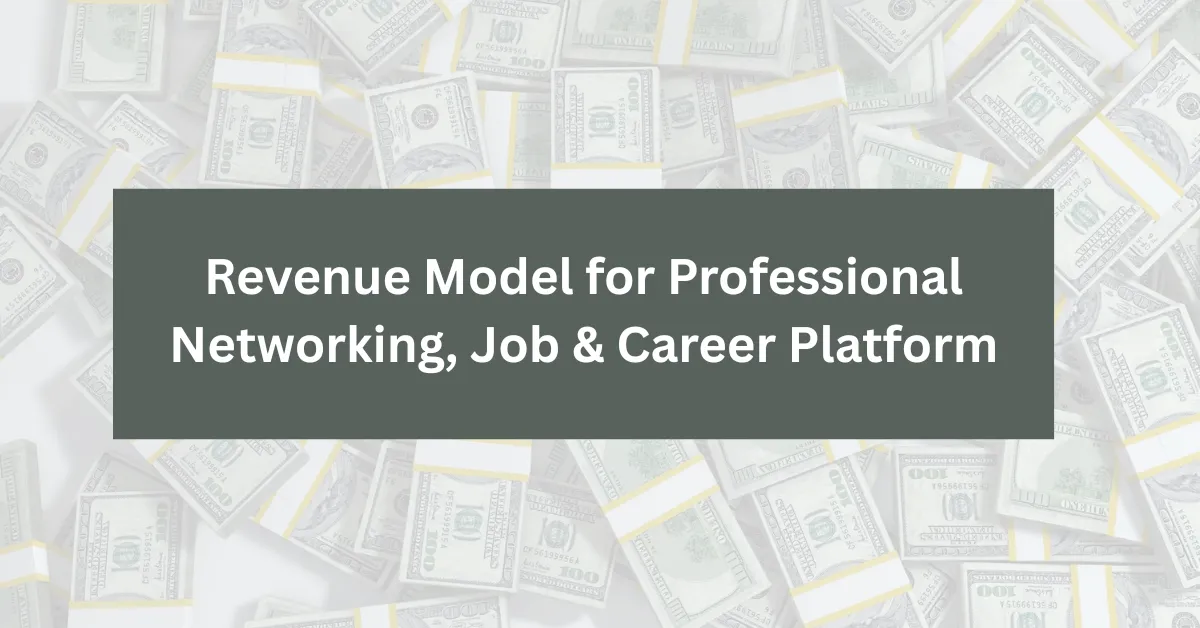Let’s be real—no one’s logging into a Professional Networking and Job Platform just to kill time. Whether it’s landing a dream role, hiring top talent, or closing the next big B2B deal, people come in with purpose. And for founders? That kind of intent is a goldmine. If you’re thinking about building a LinkedIn clone, you’re stepping into a space that’s built on trust, traction, and seriously monetizable traffic.
But let’s not stop at job listings and resume databases. Today’s career-focused platforms are a hybrid of SaaS, social, marketplaces, and micro-communities. Users don’t just want a job—they want leverage. And the platforms that get this? They don’t just grow—they print revenue.
At Miracuves, we specialize in helping entrepreneurs launch LinkedIn-style clones that are more than just polished profiles—they’re monetization machines. If you’re ready to transform connections into cash flow, let’s dive into the revenue models powering the future of work.
The Landscape of Career Platforms Today
From heavyweights like LinkedIn and Glassdoor to niche networks like AngelList and Behance, there’s massive variety in how job-focused platforms work—and how they earn. Some lean toward B2B SaaS, others toward talent marketplaces. The key is knowing your audience and matching monetization accordingly.
Also worth noting: these platforms often serve multiple user types—job seekers, recruiters, companies, mentors—each with different pain points and willingness to pay.
Read More : How Much Does It Cost to Build a Job Board Marketplace Platform from Scratch?
Top Revenue Models for Job and Career Platforms

1. Premium Subscriptions (Job Seekers and Recruiters)
This is one of the most dependable revenue streams. Examples include:
- Job Seeker Premium: See who viewed your profile, unlock insights, access premium listings
- Recruiter Pro Tools: Advanced filters, bulk messaging, talent analytics
Platforms like LinkedIn have proven that users will pay for an edge, especially in competitive markets.
2. Job Posting Packages
Employers pay to list jobs—simple but powerful. Options include:
- Pay-per-post
- Subscription-based unlimited postings
- Featured listings for extra visibility
This model scales well with employer acquisition and partnerships.
3. Resume and Profile Boosting
Job seekers can pay to:
- Boost their profile in search results
- Highlight specific certifications
- Get profile review and resume writing services
Think of it as SEO—for humans.
4. Micro-SaaS for Employers
Offer tools like:
- Applicant Tracking Systems (ATS)
- Team hiring dashboards
- Diversity reporting
- Onboarding checklists
These SaaS features increase retention and allow for upselling.
5. Online Courses and Certification Partnerships
Upskilling is hot. Partner with:
- EdTech platforms (Coursera, Udemy, etc.)
- Industry experts offering niche certifications
You earn through referral fees, affiliate revenue, or direct course hosting.
External Source: TechCrunch – Career Tech Market Trends
Read More : Business Model for Job Board Platform App
Marketplace and Community Monetization
Mentorship-as-a-Service
Allow mentors to offer paid sessions or career coaching. You take a cut, and they get visibility. Ideal for:
- College-to-career transitioners
- Executives switching industries
- Freelancers looking to scale
Event Monetization
Host or partner on:
- Virtual job fairs
- Industry AMAs
- Webinars and workshops
Charge for access, or let sponsors foot the bill.
Affiliate Job Boards and Lead Sales
If your platform has niche focus (e.g., data science jobs), you can:
- Resell niche job listings from larger partners
- Monetize traffic with affiliate placements
- Earn from lead referrals to staffing agencies
Emerging Trends in Career Platform Monetization
- AI Resume Builders: Offer it free but charge for optimization, formatting, and templates
- Video Introductions: Paid video profile hosting
- Freelancer Integrations: Create hybrid job boards + gig marketplaces
- Remote-first Hiring Tools: Time-zone filters, salary match engines, and language profilers
Common Mistakes to Avoid
- Forgetting the passive job seekers: Many users browse without applying. Monetize them with learning tools or networking features.
- Underestimating recruiters’ budget cycles: They spend—just not all the time. Offer flexible billing options.
- One-size-fits-all UX: Tailor the experience for job seekers vs. employers. That’s where conversion happens.
Read more : Top 10 Ideas for Career Coaching and Job Prep Business Startups in 2025
Conclusion & Final Thoughts
Professional networking platforms aren’t just digital resumes or job boards anymore. They’re career engines—and they need monetization strategies as dynamic as their users. If you’re building one, think beyond listings. Think relationships, retention, and results.
At Miracuves, we help innovators launch high-performance app clones that are fast, scalable, and monetization-ready. Ready to turn your idea into reality? Let’s build together.
FAQs
Still have questions about revenue models for job and career platforms? Let’s clear them up.
Do job seekers really pay for subscriptions?
Yes. Especially in competitive industries or during economic uncertainty. Features like visibility and insights are often worth the cost.
How do small platforms compete with LinkedIn?
By focusing on niche industries, better user experience, or regional talent markets. Monetization follows relevance.
Are employers willing to pay on new platforms?
They are, if your platform delivers results. Start with free trials or pilot listings to build trust.
Can I mix SaaS and marketplace models?
Absolutely. Many successful platforms combine hiring tools with job boards and networking features.
What’s the most reliable income stream?
Recurring recruiter subscriptions and premium employer tools offer the most stable cash flow.








